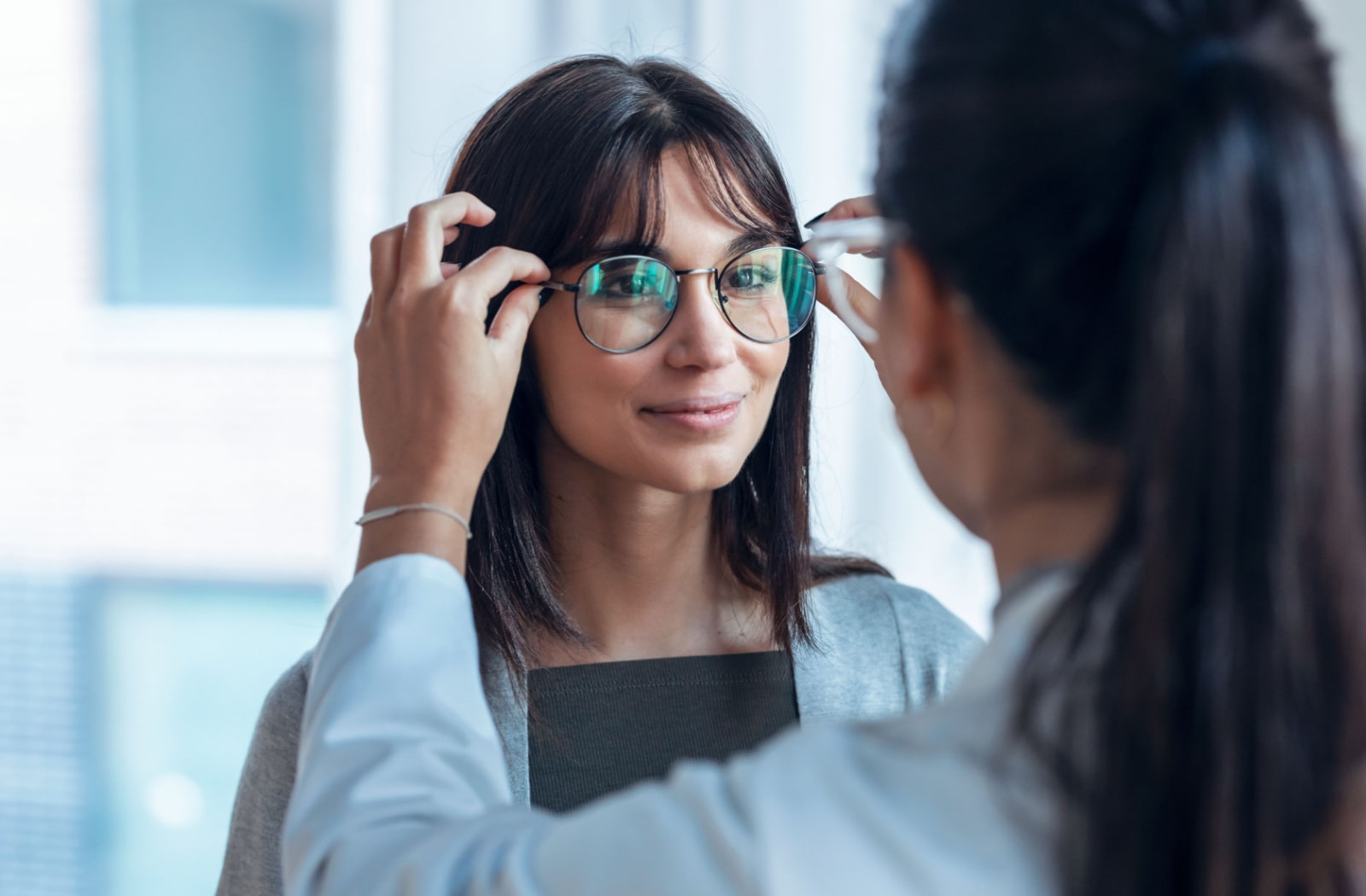Checking Out the Most Current Technical Innovations in Optometry and What They Mean for Optometrists
In the ever-evolving field of optometry, current technical developments are improving exactly how practitioners come close to eye care. From the accuracy of Optical Coherence Tomography to the nuanced insights offered by AI-driven diagnostic devices, these developments are establishing new criteria in client analysis and treatment. Teleoptometry is positioned to redefine accessibility, making sure that know-how transcends geographical constraints. As these advancements penetrate the practice, optometrists are encountered with the challenge of welcoming these tools to boost patient results. Yet, the question continues to be: how will these technical shifts redefine the roles and duties within the profession?
Developments in Diagnostic Equipment
Advancing the area of optometry, innovations in analysis tools have changed the means eye treatment professionals assess and detect ocular problems and visual impairments. The previous years has observed considerable technological advancements, enabling more extensive and accurate examinations.
Another secret innovation is the introduction of innovative corneal topography systems, which map the surface curvature of the cornea with accuracy. These tools are especially useful for suitable contact lenses and detecting corneal disorders. In addition, digital retinal imaging has actually changed conventional ophthalmoscopy, supplying detailed, scenic sights of the retina that facilitate detailed visual exams.
The development of wavefront aberrometry has also been important, making it possible for the evaluation of refractive mistakes with unrivaled precision (Eye Doctor). This modern technology aids in tailoring corrective lenses and boosting surgical results for refractive surgical treatments. Jointly, these analysis developments empower eye doctors to provide superior client care, guaranteeing very early treatment and customized treatment approaches, ultimately improving visual wellness outcomes
AI in Individual Monitoring
Structure on the structure of sophisticated diagnostic devices, the unification of synthetic intelligence (AI) in patient monitoring stands for a transformative leap for optometry. AI systems are increasingly used to improve efficiency, precision, and personalization in patient treatment. By analyzing vast quantities of data, AI can determine patterns and forecast potential eye conditions, allowing optometrists to customize interventions more effectively. This capacity is vital in handling persistent eye conditions such as glaucoma and diabetic retinopathy, where very early detection and continual tracking are crucial.
Moreover, AI-driven systems facilitate streamlined person interactions and administrative procedures. Automated organizing, digital assessments, and individualized follow-up plans not just enhance client complete satisfaction but additionally maximize time administration for professionals. These systems can triage clients based on the necessity of their conditions, making sure that those in essential need get timely attention.
In addition, AI enhances decision-making by providing optometrists with evidence-based suggestions and therapy paths. By integrating data from electronic health and wellness documents, AI devices supply understandings that inform scientific choices, reducing the risk of mistakes and improving individual results. As AI continues to advance, its duty in client management will likely increase, improving the landscape of optometric treatment.
Developments in Retinal Imaging
In the world of optometry, retinal imaging has seen exceptional technical innovations that are improving analysis capabilities and client treatment. Innovations such as Optical Coherence Tomography (OCT) and fundus photography have transformed exactly how eye doctors picture and evaluate the retina. OCT, particularly, provides high-resolution, cross-sectional photos of the retina, permitting for the in-depth exam of its layers. This capacity is invaluable for early detection and administration of conditions like glaucoma, diabetic retinopathy, and age-related macular deterioration.
Improved imaging methods like OCT angiography are further refining diagnostic accuracy. Optometrist Chino. Such improvements facilitate the identification of min retinal changes that might indicate disease progression.
In addition, developments in expert system are augmenting retinal imaging by allowing computerized evaluation of large datasets. These systems assist optometrists in determining patterns a sign of pathology, therefore enhancing analysis precision and performance. Collectively, these technologies are transforming retinal imaging into a keystone of modern-day eye care, enhancing outcomes and broadening healing possibilities.
Teleoptometry's Expanding Role
Teleoptometry is progressively becoming an important part of eye care, driven by advancements in data and diagnostic tools. As optometry welcomes electronic makeover, teleoptometry facilitates remote consultations, allowing optometrists to extend their services past typical borders. This is especially valuable in underserved and country locations where access to specialized eye care is commonly restricted. By leveraging high-resolution video clip conferencing and progressed retinal imaging, eye doctors can carry out detailed eye examinations from afar, making sure prompt medical diagnosis and therapy.
The assimilation of expert system (AI) additional boosts teleoptometry, allowing the analysis of aesthetic information and assisting in the detection of eye problems such as glaucoma and diabetic retinopathy. AI-powered algorithms can rapidly analyze complicated imaging data, supplying eye doctors with important insights that bolster medical decision-making.
Furthermore, teleoptometry sustains continuity of care via seamless assimilation with electronic wellness records (EHRs), enabling i was reading this eye doctors to maintain detailed client backgrounds. This makes sure that patients get personalized and consistent care even when talking to various specialists.
In spite of these benefits, difficulties continue to be, including making sure information safety and security and taking care of individual assumptions. Teleoptometry stands for a substantial stride in the direction of more accessible, efficient, and patient-centered eye care. As modern technology advances, its duty is poised to expand even more.

Future Fads in Eye Treatment
A myriad of innovative fads is established to improve the future of eye care, driven by technological developments and the developing needs of patients. One significant fad is the assimilation of expert system (AI) he said in diagnostics, which guarantees to improve the precision and efficiency of eye exams. AI algorithms can analyze substantial amounts of information from retinal pictures, potentially identifying problems like diabetic retinopathy and glaucoma earlier than traditional methods.
Moreover, personalized medication is getting grip in optometry, with genetic screening notifying customized therapy plans. This approach aims to maximize patient outcomes by customizing treatments to individual genetic accounts. Wearable innovation, such as wise call lenses, is likewise imminent, providing real-time monitoring of intraocular pressure or sugar levels, hence providing continual understandings right into systemic and eye health.
The fostering of enhanced fact (AR) and digital fact (VIRTUAL REALITY) in training and person education is an additional emerging fad. These modern technologies use immersive experiences that can enhance understanding and skills both for optometrists and patients. As these fads advance, eye doctors should stay abreast of technical improvements to provide sophisticated treatment, making sure improved person end results and contentment in the vibrant landscape Eye Doctor Optometrist of eye care.
Verdict

Collectively, these analysis improvements equip optometrists to supply remarkable client treatment, making certain very early intervention and customized therapy methods, eventually improving aesthetic health end results.

As these innovations proceed to develop, optometrists need to adjust and integrate them right into method, inevitably maximizing operations effectiveness and boosting the requirement of eye care provided to clients.
 Edward Furlong Then & Now!
Edward Furlong Then & Now! Scott Baio Then & Now!
Scott Baio Then & Now! Macaulay Culkin Then & Now!
Macaulay Culkin Then & Now! Talia Balsam Then & Now!
Talia Balsam Then & Now! Dawn Wells Then & Now!
Dawn Wells Then & Now!